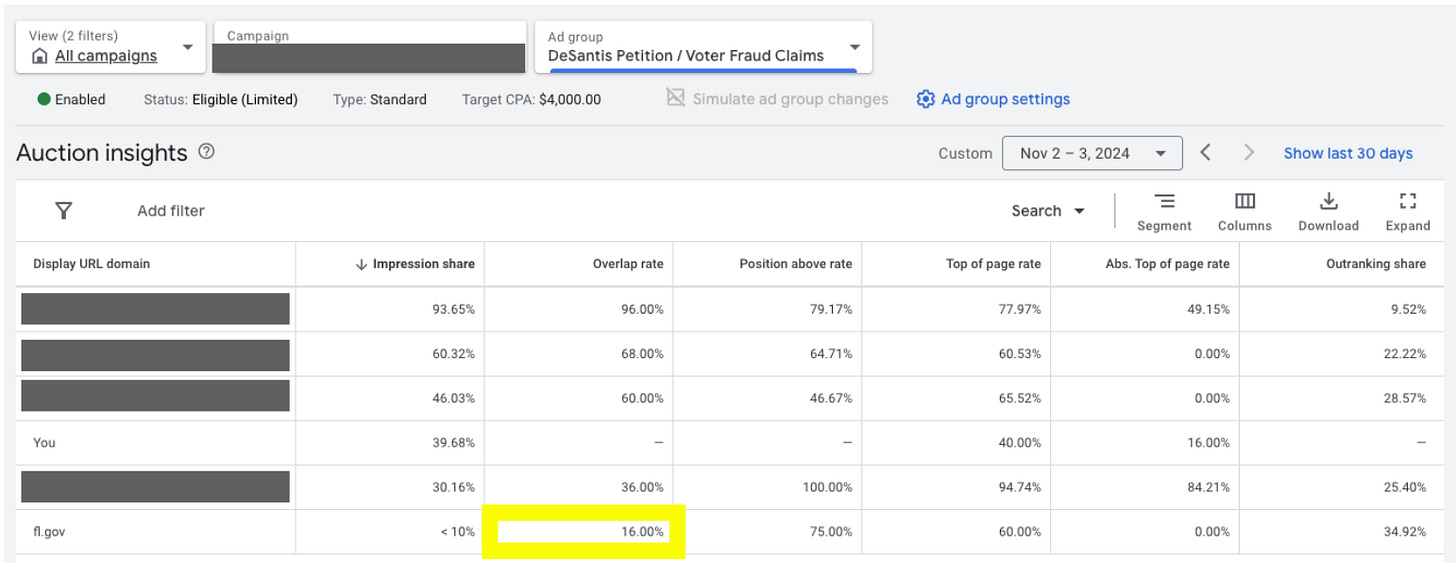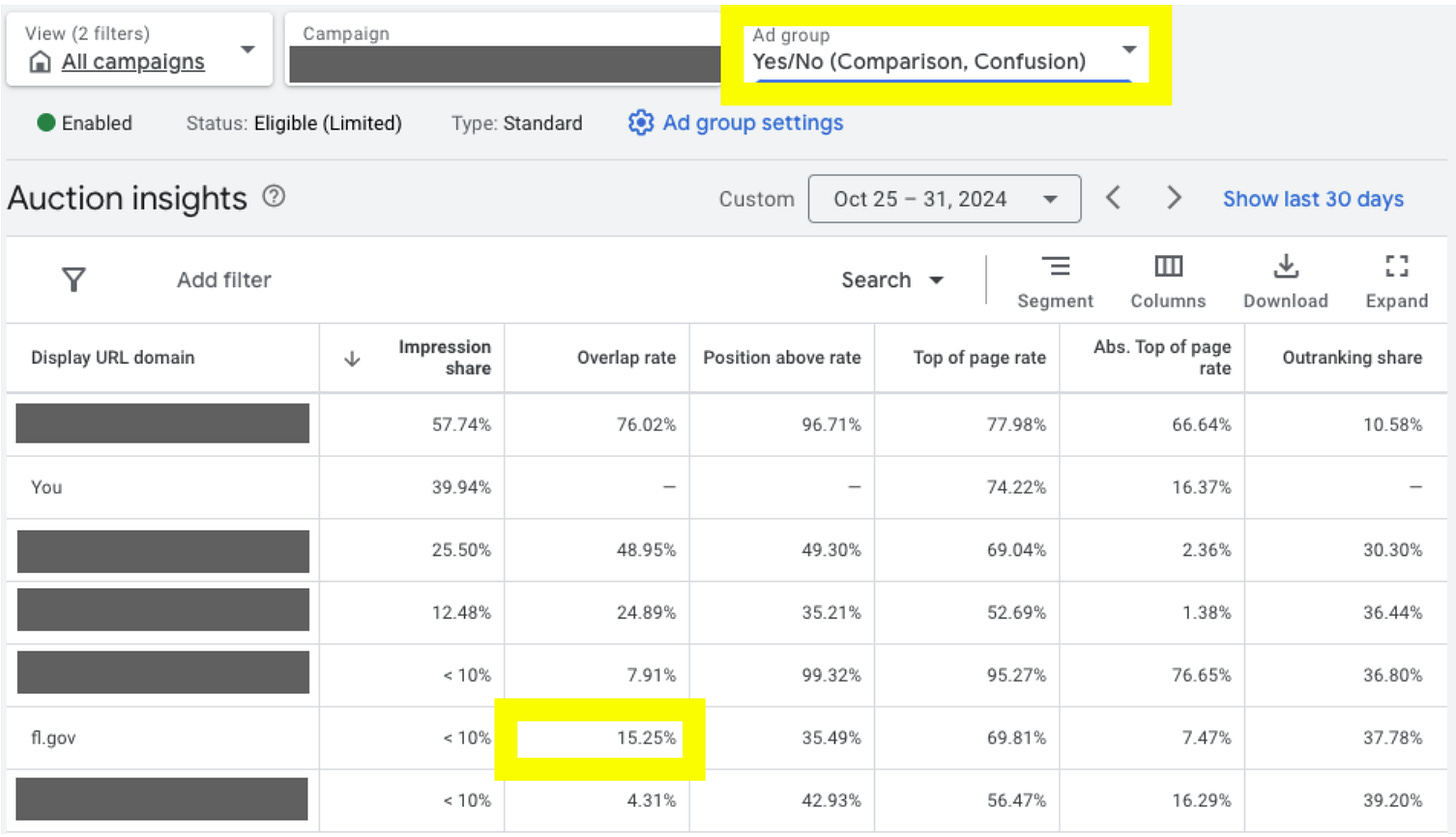From the Archives: Florida's Secret, State-Backed Anti-Abortion Ads
A deep dive into the state-sponsored digital manipulation that targeted Florida voters during 2024's Amendment 4.
The campaign for Florida's Amendment 4 in the fall of 2024 was a chaotic information environment, saturated with misleading narratives from opposition groups. Among this landscape, my team discovered something more alarming: Florida's own state agencies had joined them. They were running secret, anti-abortion ads on Google that aligned perfectly with partisan talking points, all while exploiting loopholes in the platform’s election policies to evade transparency.
When we first uncovered this, we attempted to warn the public and hold the officials accountable via the media, but it was ultimately never published. So, we took matters into our own hands, and succeeded in getting the ads removed just 48 hours before the election.
Today, I’m opening my archives to release the full audit of this incident. It's a case study in what state-backed disinformation looks like in the digital age. Often, it’s a quiet, systemic manipulation of the very platforms we trust for information and to get the facts.
A Loophole in Action
Digital influence and disinformation campaigns thrive in systems designed to exploit vulnerabilities. We found Florida's Agency for Health Care Administration (AHCA) and Department of Children & Families (DCF) using a significant loophole in Google’s ad policies. By routing ads through a third-party vendor, Infinite Digital LLC, and failing to classify them as political ads, bypassing the platform's stringent requirements for election advertising.
This tactic allowed them to run what were effectively political ads without the mandatory "Paid for by" disclosure, hiding the source of the campaign from voters.
But these were not neutral public service announcements.
A full analysis of the ad content and targeting confirmed they took a clear and aggressive stance.
The ad copy was unambiguous in its stance. Variations explicitly claimed that:
"Amendment 4 Endangers Mothers" and "threatens women's safety," using fear-based messaging to align with opposition narratives. This use of emotionally charged language to frame a ballot initiative negatively is a clear political act, not a neutral public service announcement. The impact is significant, as this messaging, carrying the implicit authority of a government source, can heavily influence voters seeking clarity on complex issues.
The Nudge and the Intercept Ecosystem
The state's undisclosed ads were not an isolated tactic; they were a key component of a sophisticated digital ecosystem designed to manipulate voters.
Academic studies have consistently shown a cross-platform effect where exposure to ads on one platform, like YouTube, drives users to search for more information on another, like Google. Research has found that through this interest stimulation effect, YouTube ads can act as a gateway for research, prompting further exploration on Google.
My 2023 case study on the Ohio Issue 1 abortion ballot initiative demonstrated this powerful "nudge" effect. It showed that exposing voters to YouTube ads directly influences their subsequent Google search behavior, forming a powerful two-step playbook for influence:
First, create the search demand. Emotional YouTube videos from opposition groups, spreading claims of "extreme abortion policies," primed viewers and drove them to Google for answers.
Then, intercept that demand. The state agencies' Google ads were strategically placed to intercept the very keywords these primed voters were now searching for.
This digital one-two punch is incredibly effective. It creates a seamless echo chamber where a partisan narrative is introduced on one platform and then immediately reinforced with the credibility of a government source on another.
Our audit revealed the state agencies were bidding on keywords taken directly from opposition messaging, such as "unrestricted abortions" and "vote no on Amendment 4" . This direct overlap in keyword targeting ensured that the state's messages amplified the opposition's, whether by design or by effect.


Why This Matters Now
The tactics used in Florida are a blueprint for how state power can be used to quietly manipulate the digital spaces where voters seek truth. But the most important lesson from this work is not that these campaigns exist, it's that they are not invincible.
Our successful intervention, which forced the removal of these undisclosed ads, serves as a crucial proof of concept: accountability is possible.
This is why this work matters now. In an environment where these information battles can feel overwhelming, this case is a reminder that there are vulnerabilities in these systems and that strategic, data informed, and evidence-based action works to dismantle manipulation. It is a blueprint not just for the opposition's tactics, but for how we can, and must, fight back.
For those interested in the full audit summary report, you can access it here. For the full audit, please message me directly.
If this resonated with you, share it, talk about it, and subscribe to stay connected.
Support the people and organizations still holding the line, because what happens now will shape our information systems, and our democracy, for decades.







